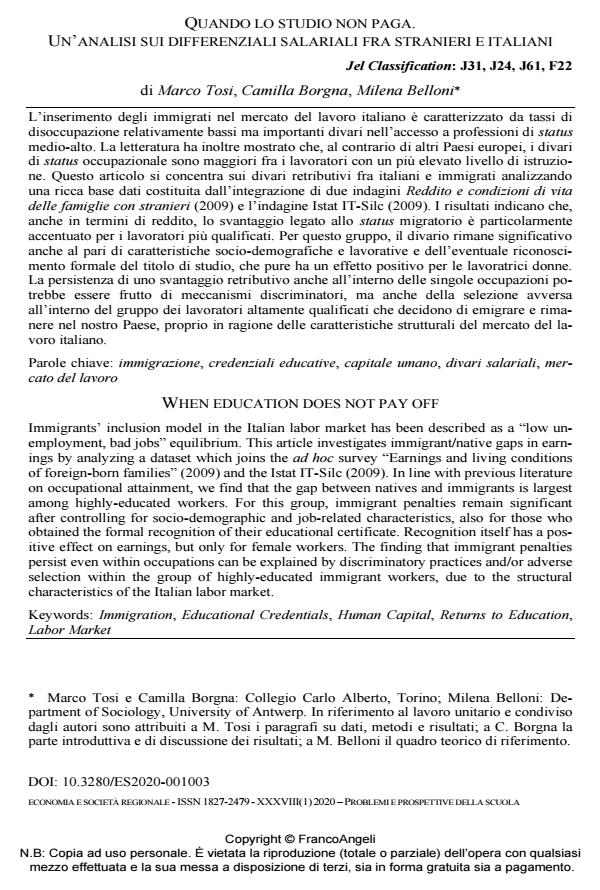When education does not pay off
Journal title ECONOMIA E SOCIETÀ REGIONALE
Author/s Marco Tosi, Camilla Borgna, Milena Belloni
Publishing Year 2020 Issue 2020/1
Language Italian Pages 18 P. 42-59 File size 313 KB
DOI 10.3280/ES2020-001003
DOI is like a bar code for intellectual property: to have more infomation
click here
Below, you can see the article first page
If you want to buy this article in PDF format, you can do it, following the instructions to buy download credits

FrancoAngeli is member of Publishers International Linking Association, Inc (PILA), a not-for-profit association which run the CrossRef service enabling links to and from online scholarly content.
Immigrants’ inclusion model in the Italian labor market has been described as a "low unemployment, bad jobs" equilibrium. This article investigates immigrant/native gaps in earnings by analyzing a dataset which joins the ad hoc survey "Earnings and living conditions of foreign-born families" (2009) and the Istat IT-Silc (2009). In line with previous literature on occupational attainment, we find that the gap between natives and immigrants is largest among highly-educated workers. For this group, immigrant penalties remain significant after controlling for socio-demographic and job-related characteristics, also for those who obtained the formal recognition of their educational certificate. Recognition itself has a positive effect on earnings, but only for female workers. The finding that immigrant penalties persist even within occupations can be explained by discriminatory practices and/or adverse selection within the group of highly-educated immigrant workers, due to the structural characteristics of the Italian labor market.
Keywords: Immigration, Educational Credentials, Human Capital, Returns to Education, Labor Market
Jel codes: J31, J24, J61, F22
Marco Tosi, Camilla Borgna, Milena Belloni, Quando lo studio non paga. Un’analisi sui differenziali salariali fra stranieri e italiani in "ECONOMIA E SOCIETÀ REGIONALE " 1/2020, pp 42-59, DOI: 10.3280/ES2020-001003